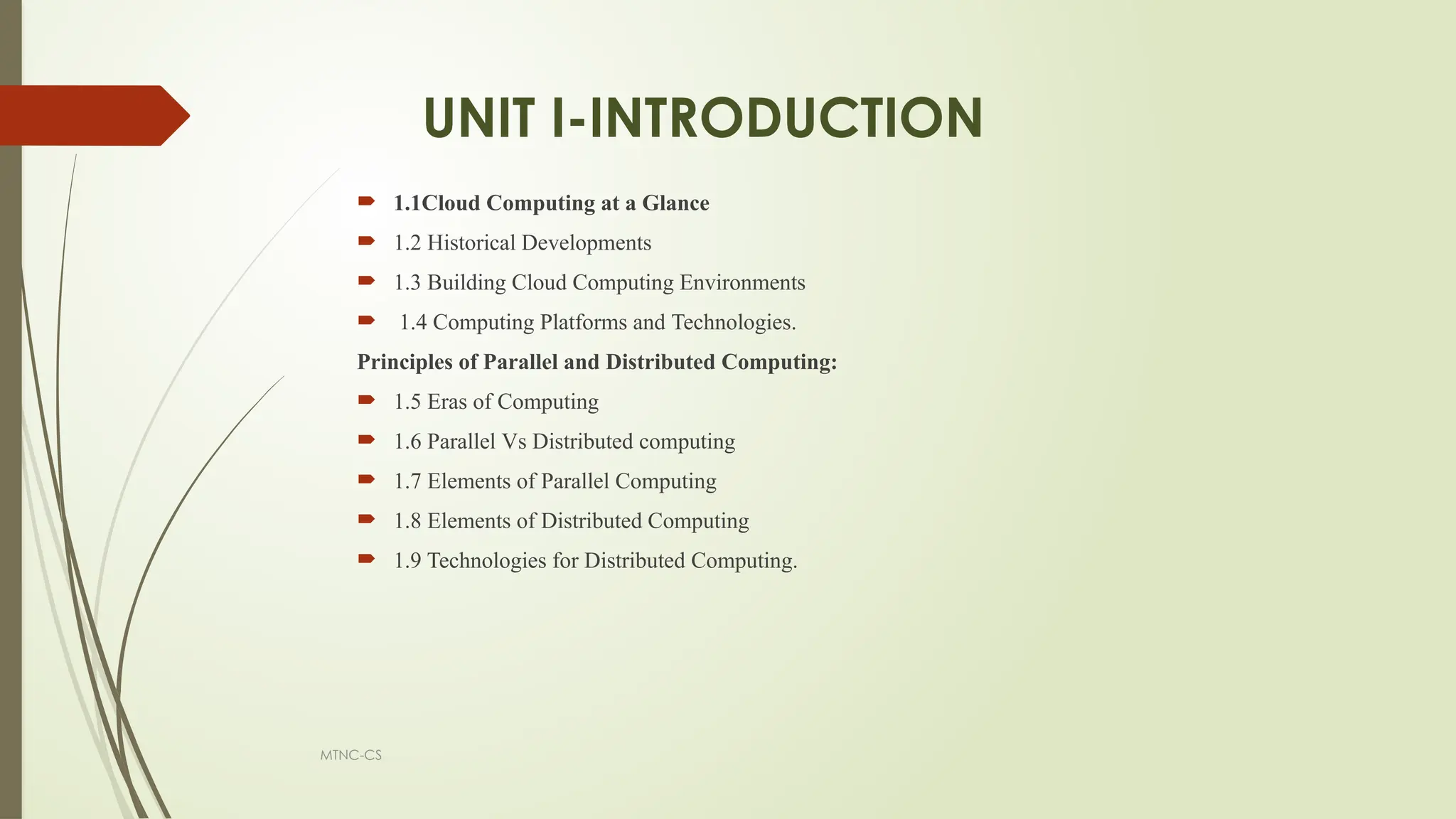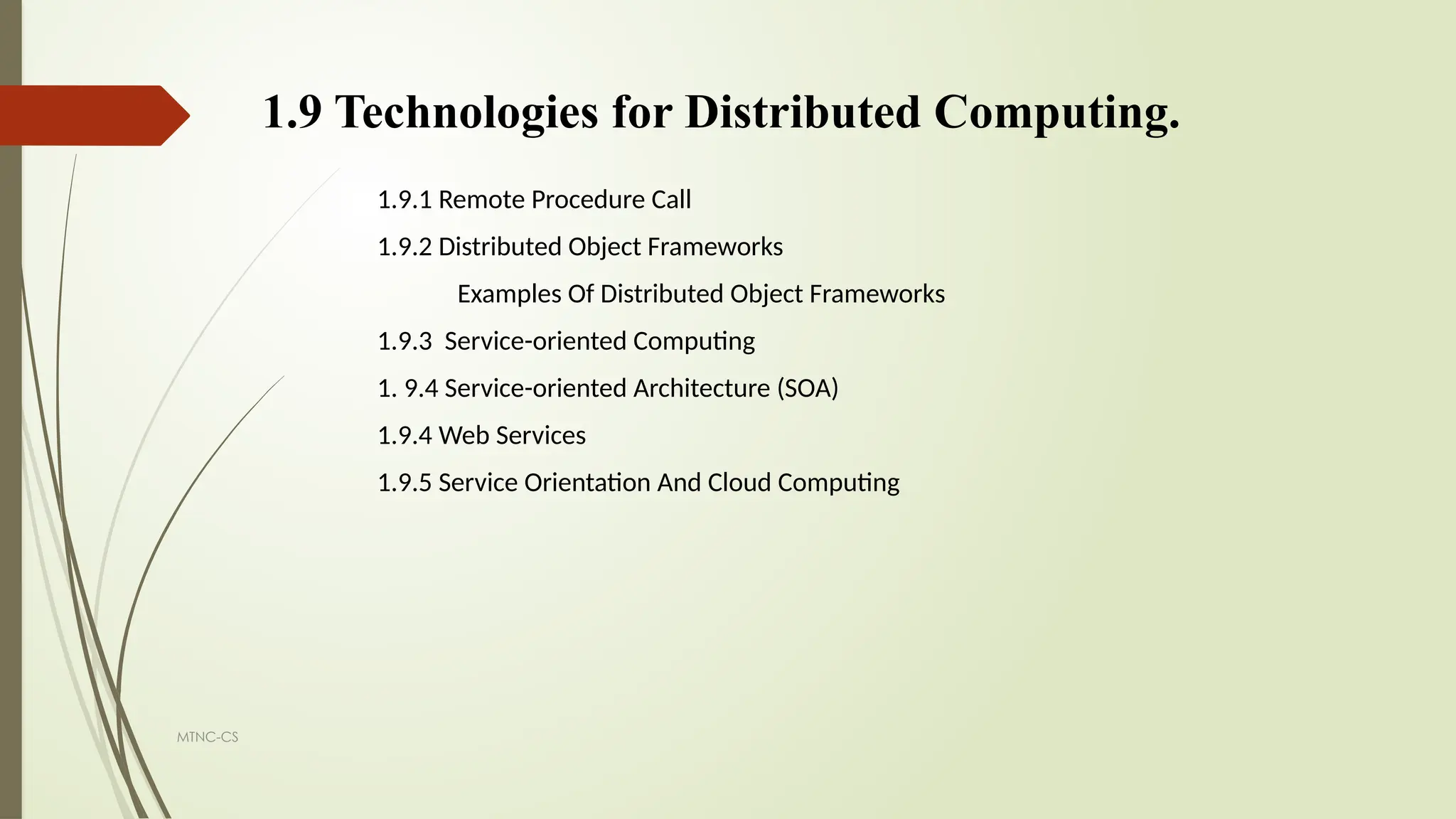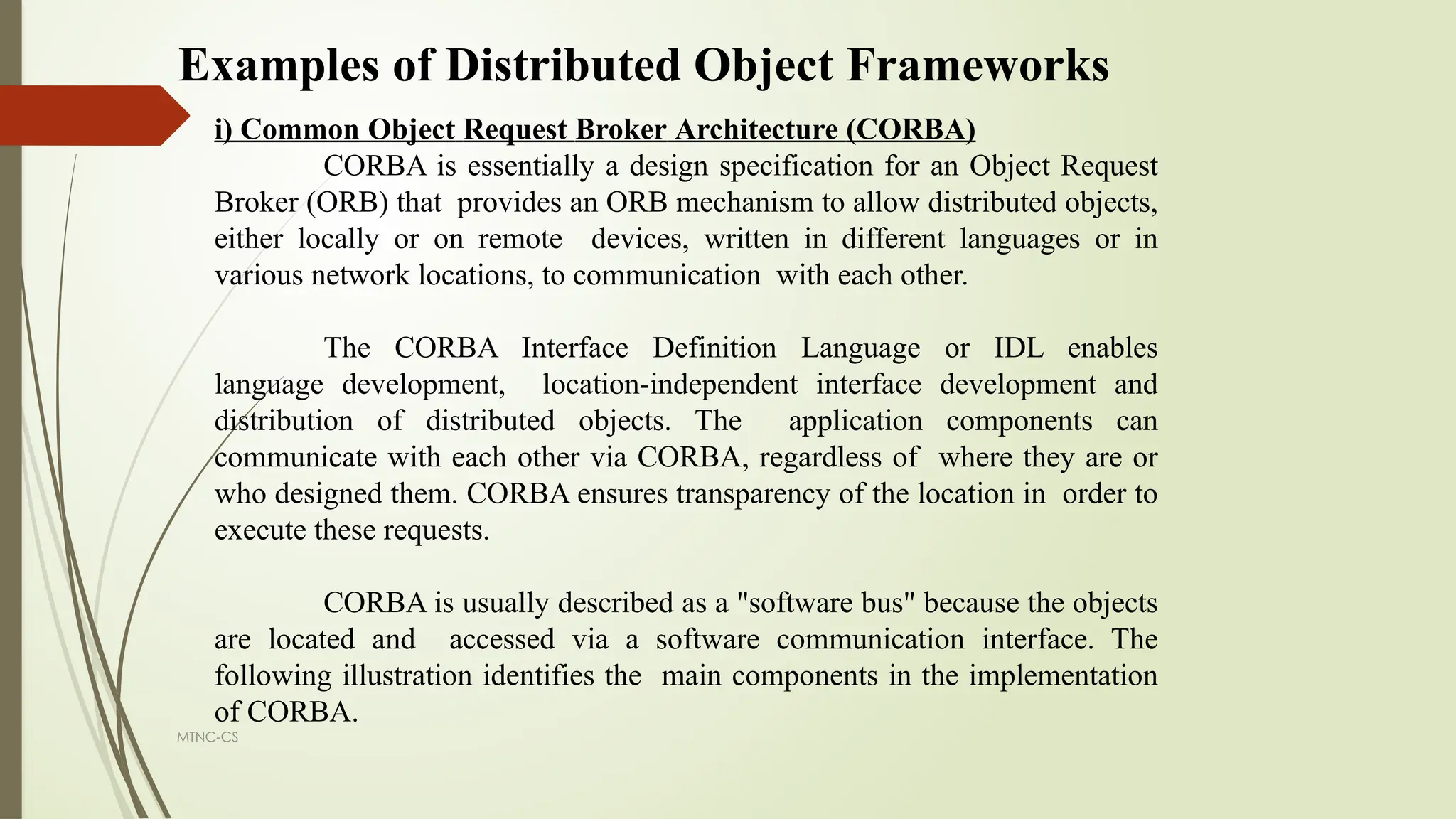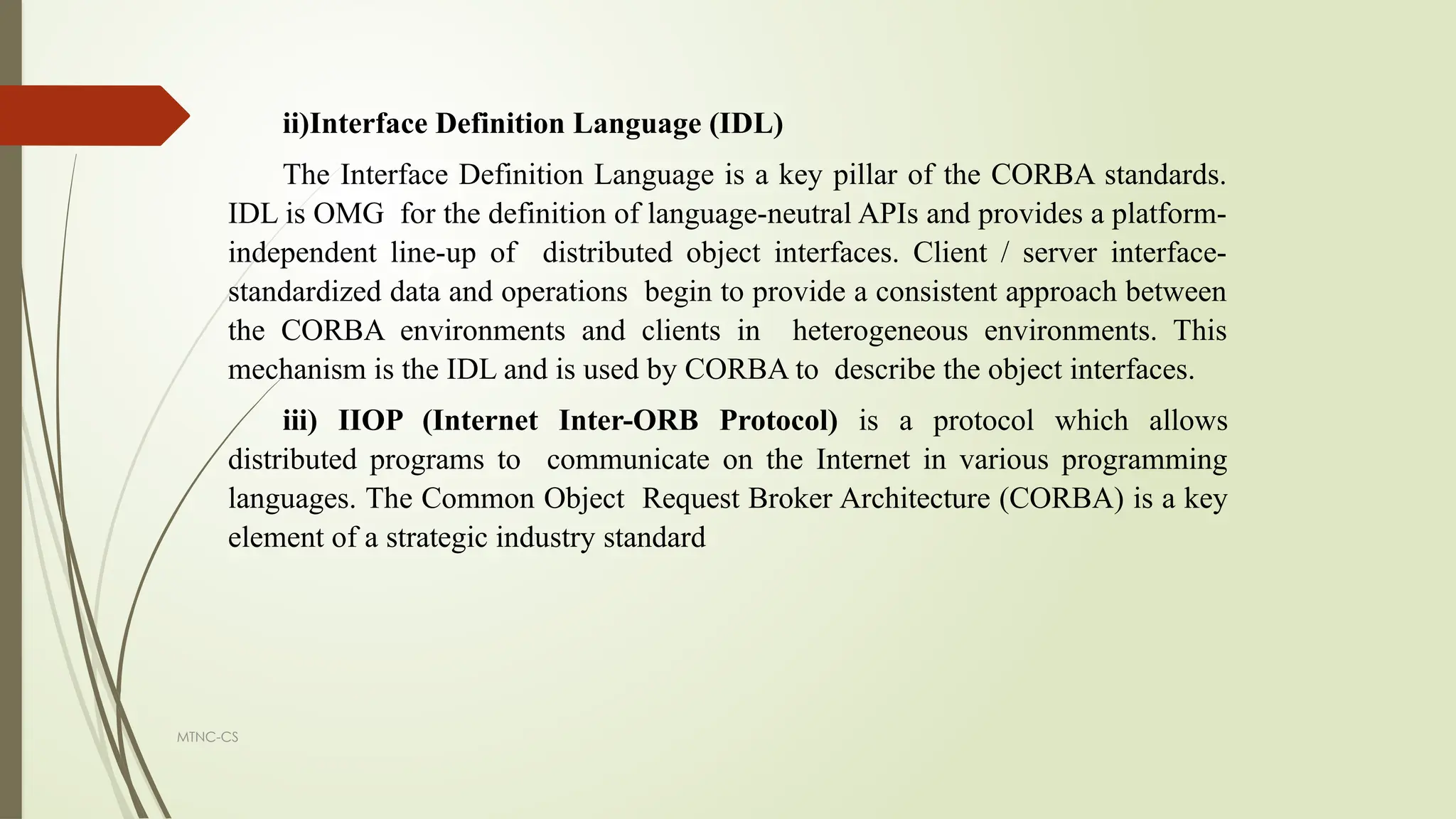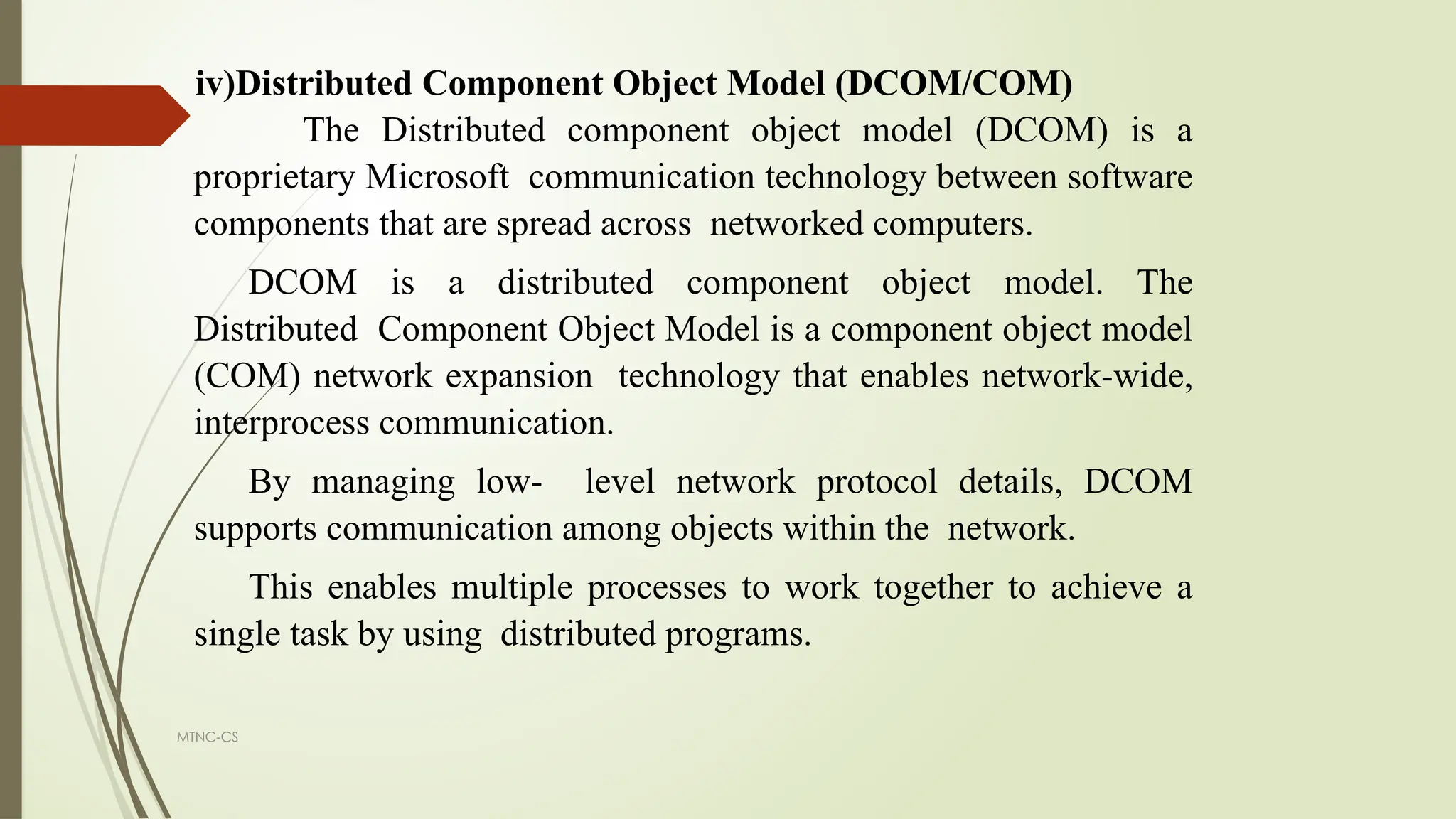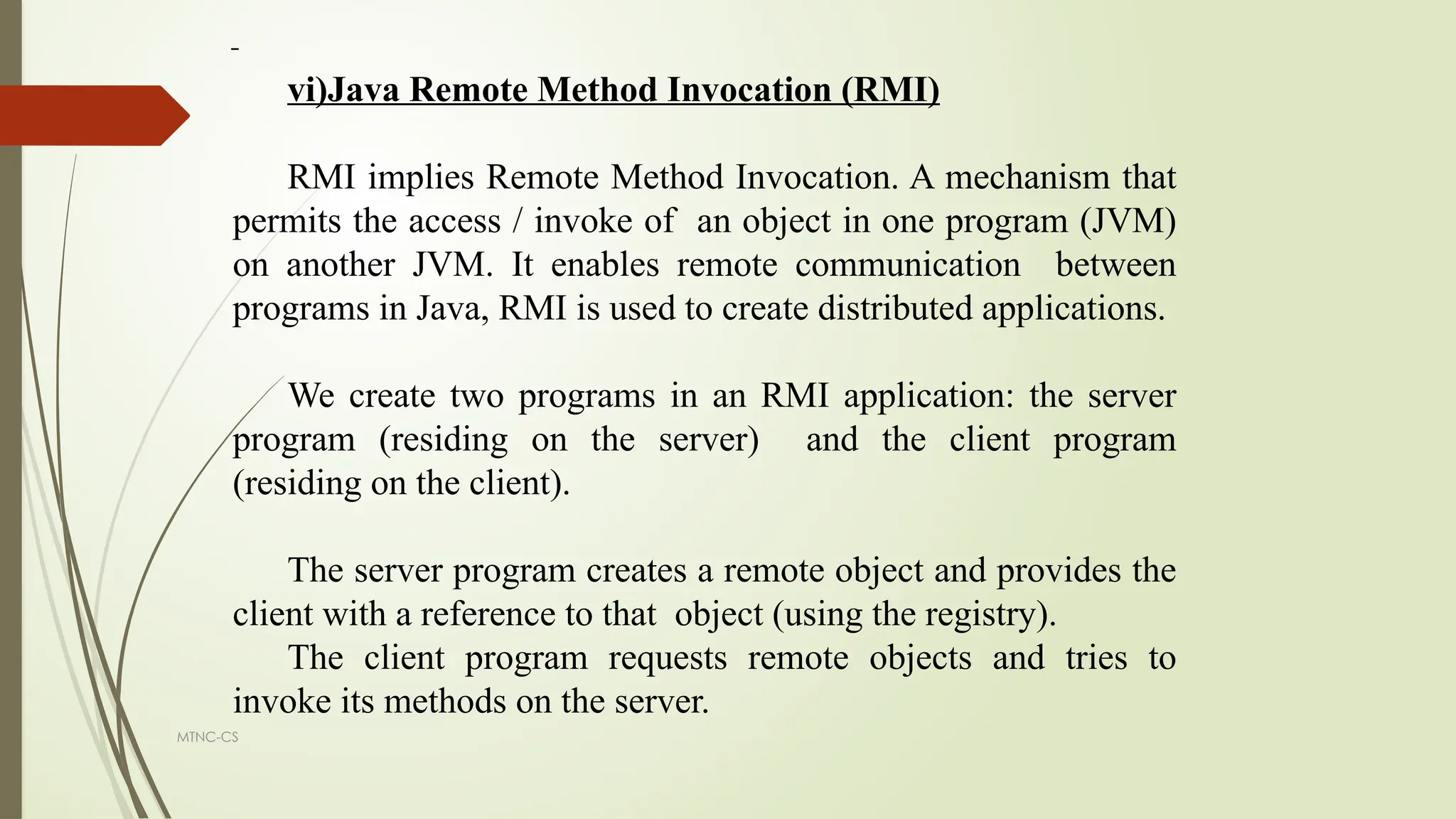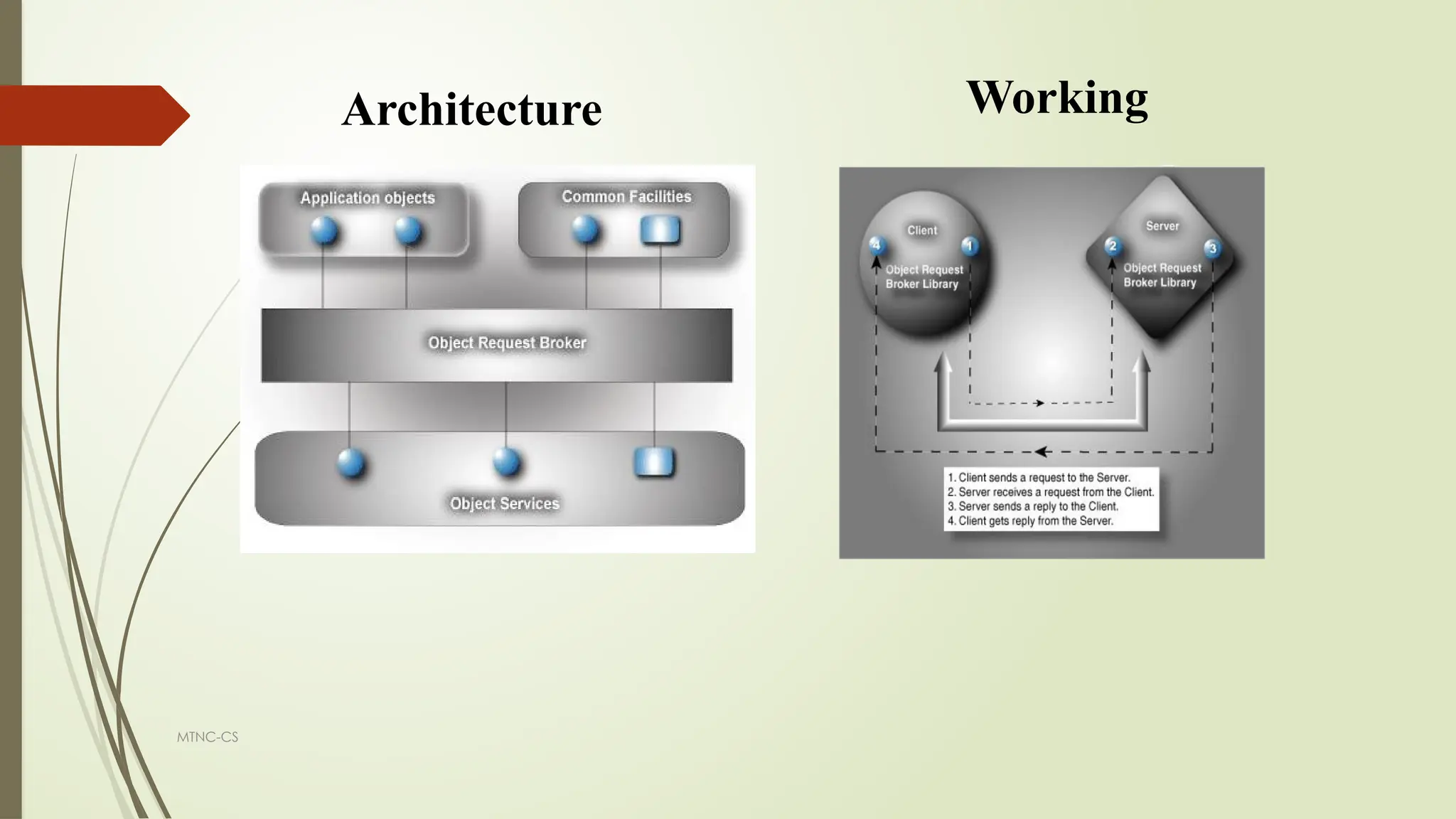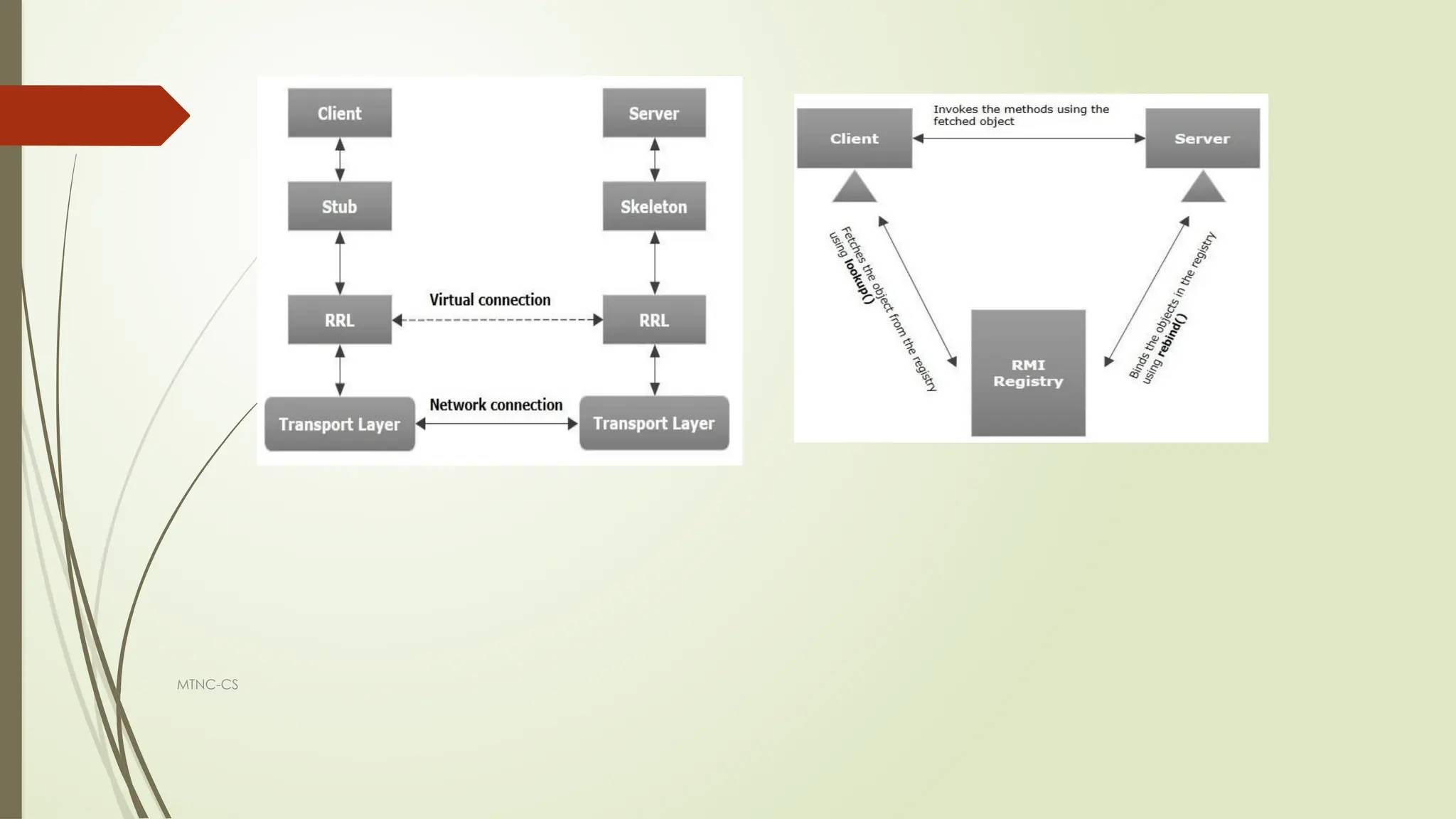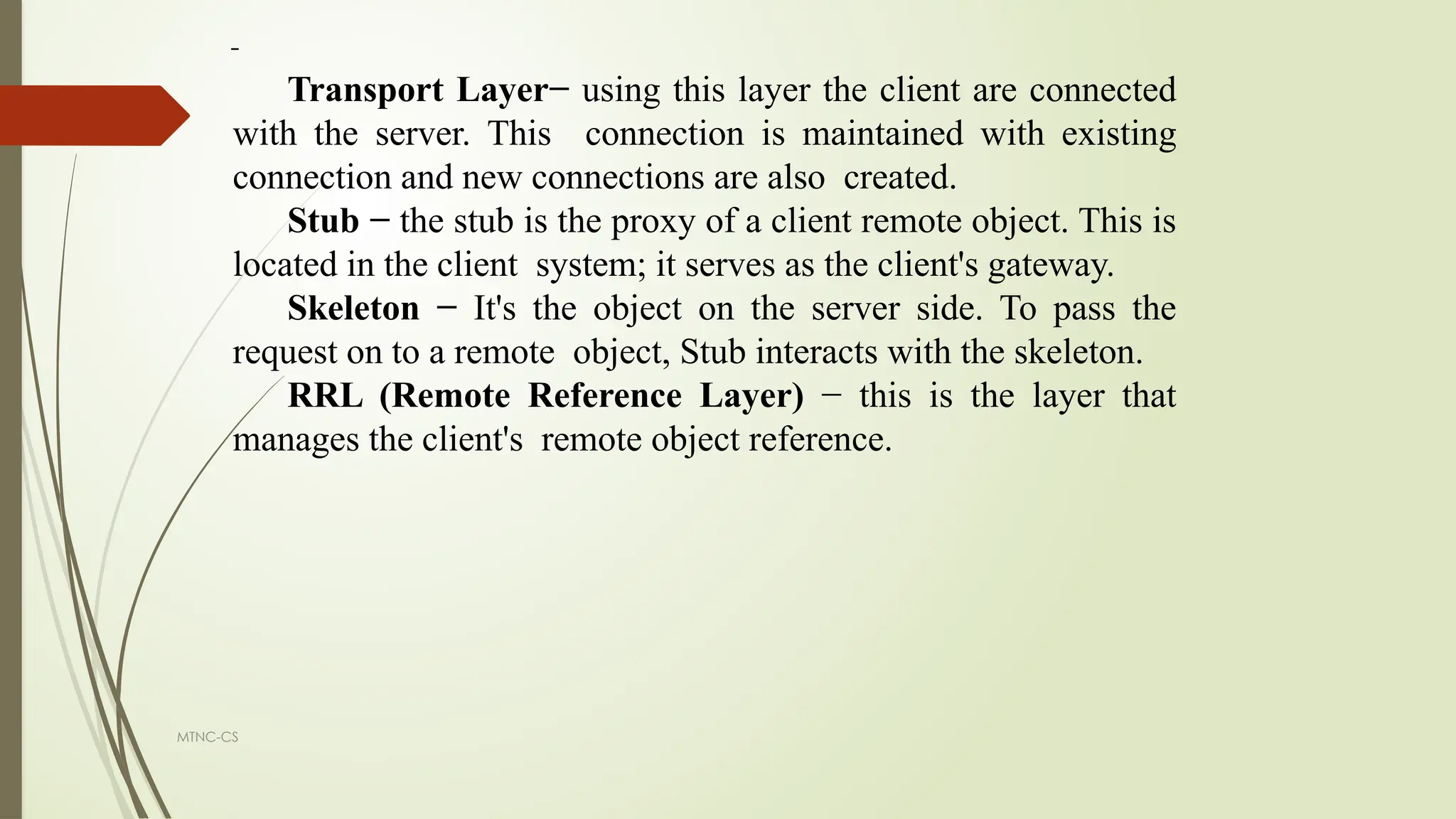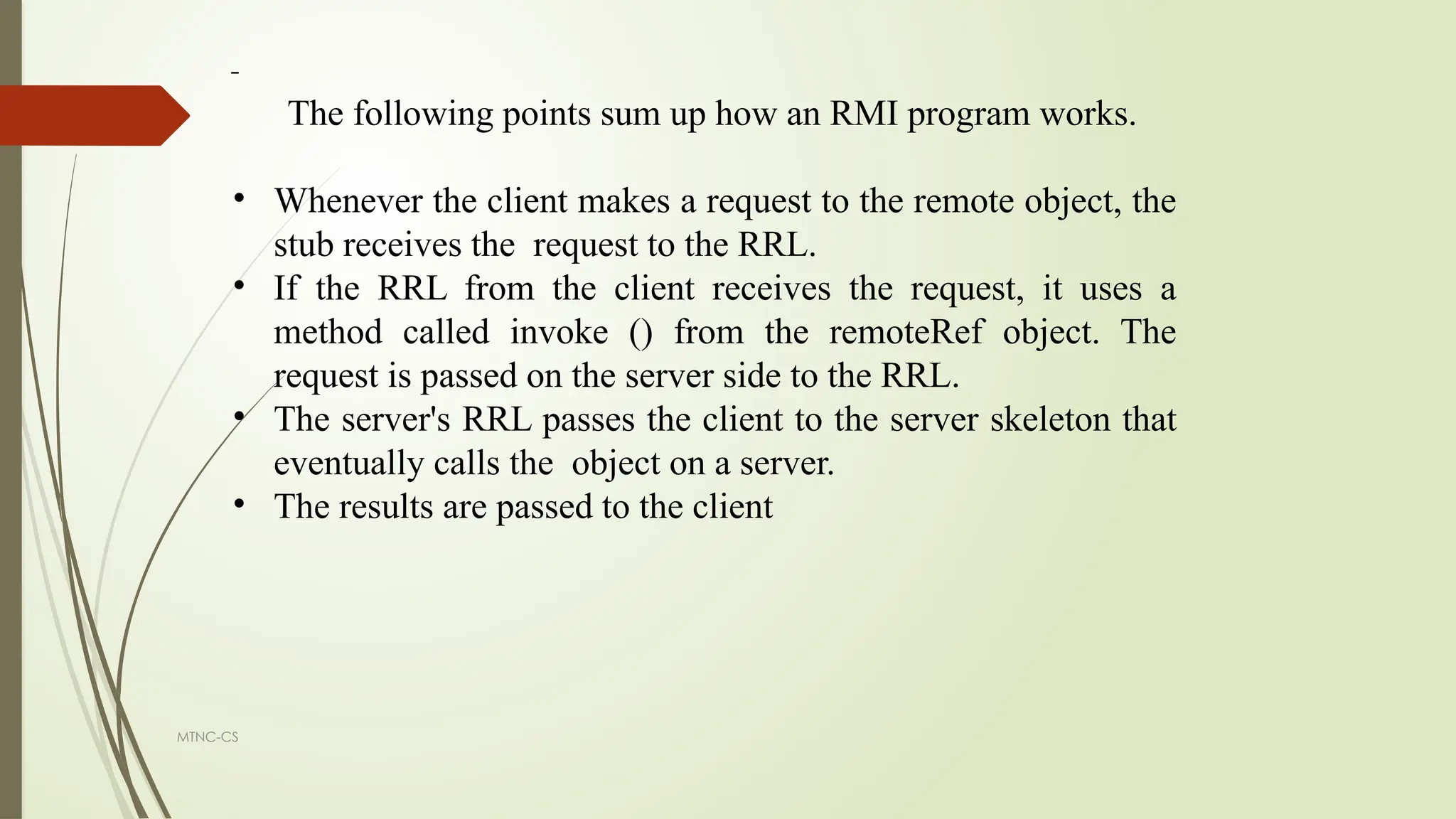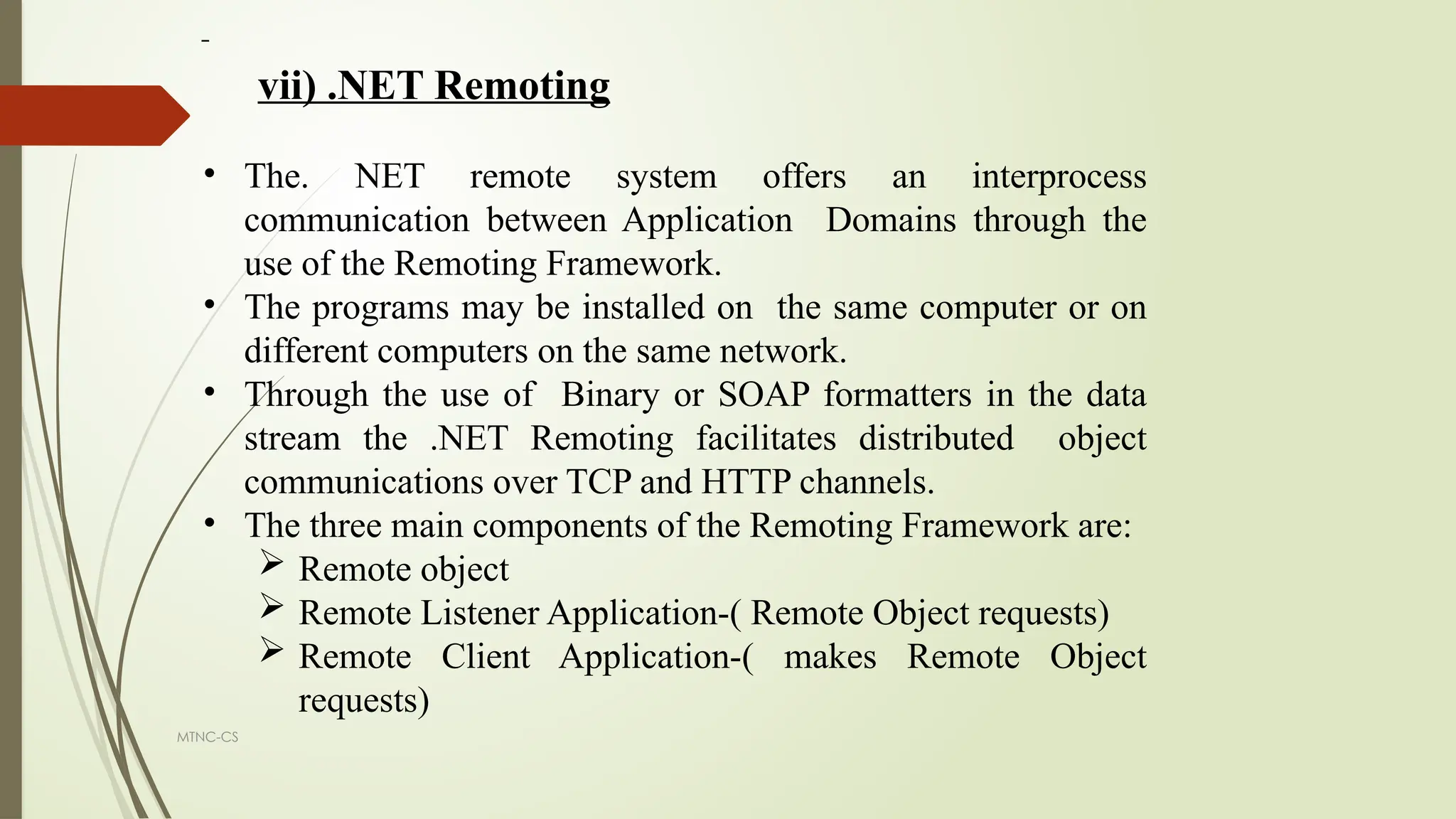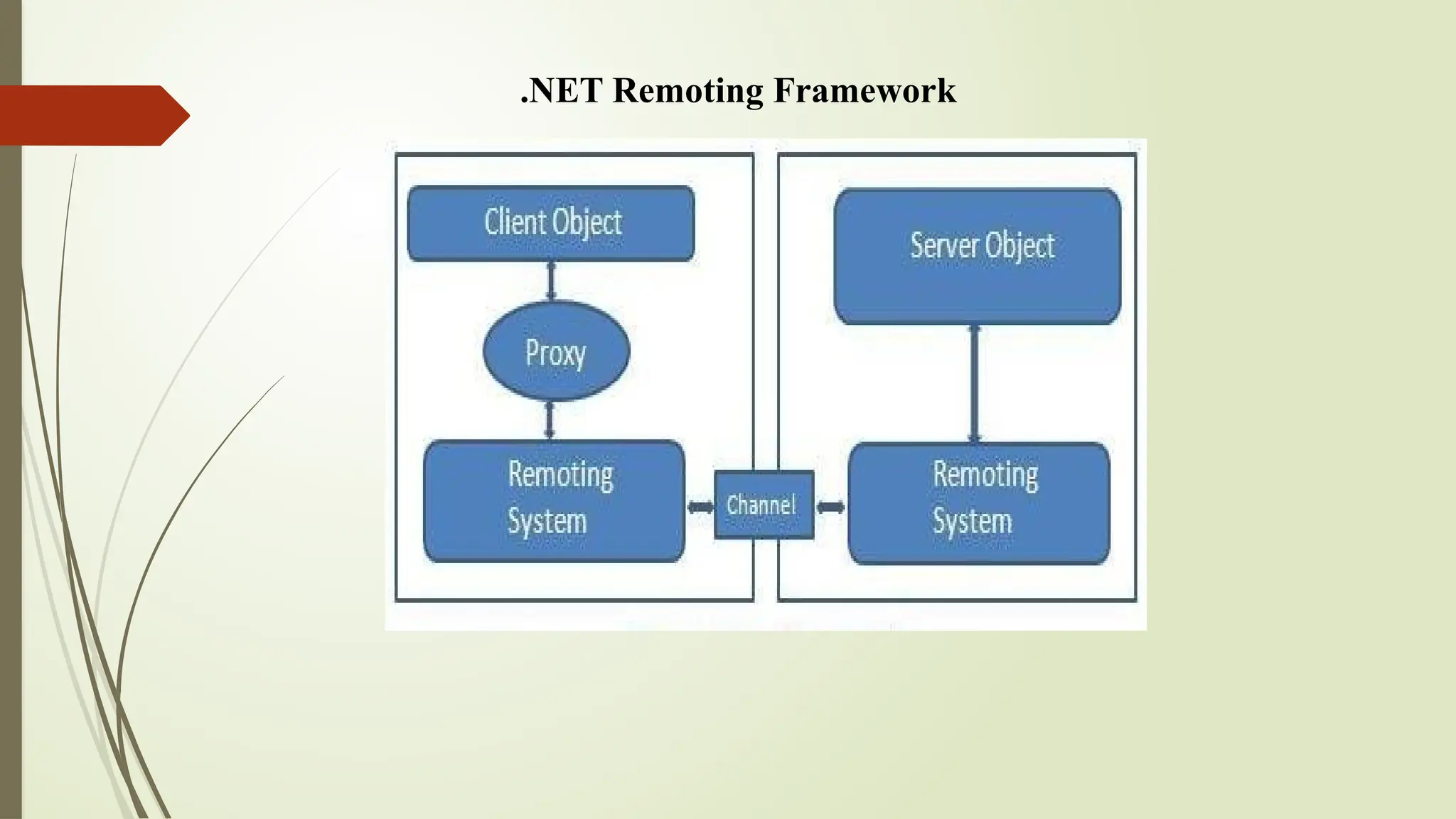The document discusses cloud computing, its historical developments, and the construction of cloud environments, highlighting principles of parallel and distributed computing. It covers technologies for distributed computing including CORBA, DCOM, RMI, and .NET Remoting, emphasizing their roles in enabling communication between distributed objects across various platforms. Key components such as Interface Definition Language (IDL) and Internet Inter-ORB Protocol (IIOP) are explained, outlining their importance in standardizing APIs and facilitating remote communication.
